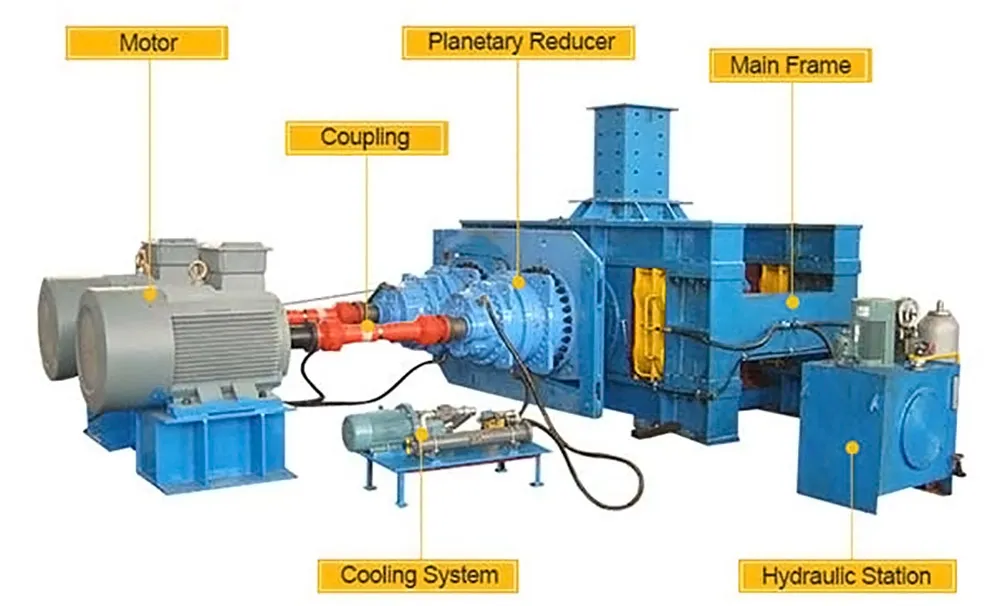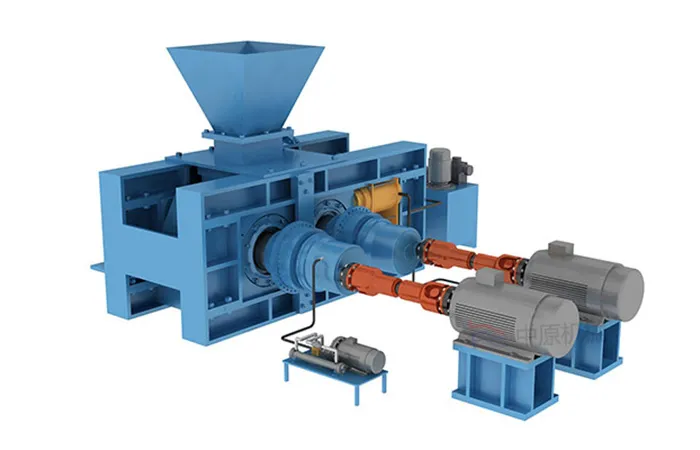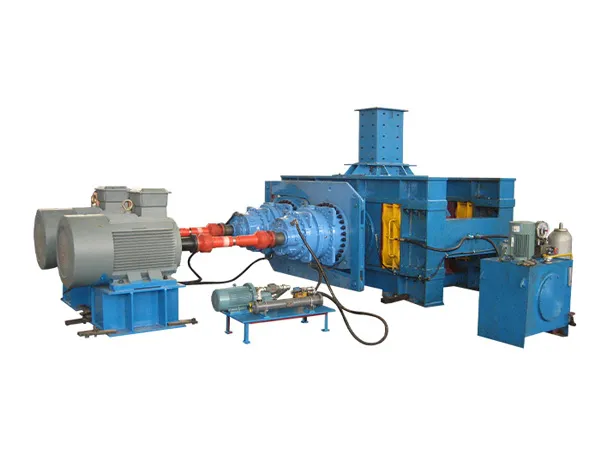

-
Products
-
Application


As HPGRs are required to handle extremely high pressures and abrasive materials, wear is a major operating cost and a factor in their efficiency and availability. Effective wear protection is essential. Let's analyze wear protection solutions for high pressure grinding rolls (HPGR).

Base Material: The core roll body is typically made from high-strength forged steel or sometimes specialized cast iron alloys to withstand the immense operating pressures.
Wear Surface Design: The most common approaches for the actual wear surface are:
Solid Rolls (Less Common for Large Units): The entire roll body might be made of a wear-resistant alloy, but this is less common for large, modern HPGRs due to cost and manufacturing challenges.
Segmented Rolls: The roll surface is made of multiple cast or forged segments bolted or keyed onto the roll body. This allows for easier replacement of worn sections.
Tires/Sleeves: A replaceable outer wear layer (the "tire" or "sleeve") is shrunk-fit or mechanically fastened onto a core roll shaft/body. This is a very common and practical design, allowing for easier replacement of the wear surface without replacing the entire roll body.

This is where the most distinct wear protection strategies lie:
Welded Hardfacing Overlays:
Process: Applying layers of extremely hard, wear-resistant weld material onto the roll surface. Common methods include Submerged Arc Welding (SAW) or Open Arc Welding (Flux-Cored Arc Welding - FCAW).
Materials: Typically high-chromium carbide (CrC) alloys, complex carbides, or sometimes tungsten carbide (WC) composites within a matrix.
Characteristics: Creates a very hard, abrasion-resistant surface. Can be multi-layered. Often applied in specific patterns (e.g., chevron, waffle) to aid material nipping and transport. Can often be re-welded/repaired multiple times, either in-situ or in a workshop.
Pros: Relatively cost-effective initial solution, repairable, well-established technology.
Cons: Wear life can be variable depending on the ore; susceptible to spalling or cracking under very high impact or pressure variations; weld quality is critical.
Tungsten Carbide (WC) Studs / Inserts:
Process: Embedding cylindrical or specially shaped tungsten carbide studs into pre-drilled holes in the roll surface (tire/segment). The studs stand proud of the base surface.
Mechanism: The studs take the direct abrasion. Crucially, fine material compacts between the studs, forming an "autogenous" or "auto-protective" layer that protects the base roll surface material. The wear occurs primarily on the WC studs and this trapped material layer.
Materials: High-quality sintered Tungsten Carbide Cobalt (WC-Co) studs.
Pros: Excellent wear life, often significantly longer than hardfacing in highly abrasive applications; maintains a relatively consistent surface profile as it wears; promotes stable operation due to the autogenous layer.
Cons: Higher initial cost; requires specialized manufacturing; less easily repaired in-situ (usually requires tire replacement); potential for stud loss if not manufactured/installed correctly or if tramp metal causes damage.
Cast Wear Segments / Tiles:
Process: Bolting or attaching high-wear resistant cast blocks or tiles (often High-Chrome White Iron - HCWI, or other specialized alloys) onto the roll body or a base tire structure.
Characteristics: Similar in principle to segmented rolls but can sometimes be applied as smaller, more numerous tiles.
Pros: Allows for replacement of individual high-wear sections; can utilize very hard cast materials.
Cons: Bolt heads/attachment points can be wear points; potential for tiles to crack or become loose; numerous joints can sometimes affect material nipping compared to a continuous surface.
Hybrid Solutions: Sometimes combinations are used, e.g., hardfacing applied between rows of studs, or different solutions on different parts of the roll face.

The sides of the rolls (edges) also experience significant wear from material pressure and abrasion.
Solution: Sacrificial wear plates, known as "cheek plates" or "edge blocks," are mounted adjacent to the roll ends. These are typically made from hardfaced steel, high-chrome iron castings, or sometimes ceramics. They are designed to be replaced periodically. Proper cheek plate design and maintenance are critical to prevent excessive edge wear on the main roll surfaces.
Feed Control: Consistent choke feeding is vital. Uneven feed distribution leads to uneven wear patterns.
Pressure Control: Operating at the optimal pressure range balances throughput, grinding efficiency, and wear rate. Excessive pressure accelerates wear.
Tramp Metal Removal: Magnets and metal detectors upstream are essential to prevent catastrophic damage to the roll surfaces.
Moisture Content: Can affect material flow and abrasiveness.
Roll Speed: Higher speeds generally increase wear rates.
Wear Monitoring: Regular measurement of roll diameter and profile (using laser scanners or profile gauges) is crucial to track wear rates and predict replacement schedules.
Condition Monitoring: Vibration, temperature, and acoustic monitoring can help detect issues like bearing problems or uneven operation that might exacerbate wear.
Inspections: Regular visual inspections for cracks, spalling, lost studs, or cheek plate damage.
Predictive Maintenance: Using wear data and operational history to schedule resurfacing (hardfacing) or tire/segment replacement proactively, minimizing downtime.
Roll Grinding: Periodically grinding the roll surfaces (especially hardfaced ones) can restore the desired profile and remove surface irregularities, although this removes usable wear material.
Selection Factors:
The best wear protection solution depends heavily on:
Ore Characteristics: Abrasiveness (critical!), hardness, particle size, mineralogy.
Operating Parameters: Pressure, speed, throughput targets.
Budget: Initial cost vs. long-term cost of ownership (wear life, replacement frequency, downtime).
Maintenance Strategy: In-situ repair capabilities vs. workshop replacement preference.
OEM Recommendations: Manufacturers have extensive experience with different applications.
In summary, HPGR wear protection involves a combination of robust roll design, advanced surface protection technologies (primarily hardfacing or WC studs), effective edge protection, optimized operating practices, and diligent monitoring and maintenance. The choice is application-specific, aiming for the best balance of wear life, performance, and cost.
How to choose the right screw conveyor?
No information

Official Agent of ZY MINING in Russia.
Please enter here.
Add: Luoxin Industrial Zone,Luoyang City,Henan Province P.R.C.
Tel: +86-379-67313306
E-mail: gloria@zyksjx.com